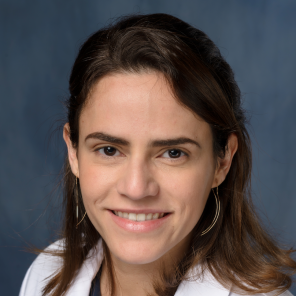
Dayane Oliveira earned a DDS degree from the Federal University of Rio de Janeiro, Brazil, as well as an MS degree in Operative Dentistry, a PhD, and Post-Doctoral training in Dental Biomaterials from the State University of Campinas in São Paulo, Brazil. Currently, she is a Clinical Associate Professor in the Department of Restorative Dental Sciences at the University of Florida, College of Dentistry.
Oliveira has devoted her teaching experience and her private practice to restorative and esthetic dentistry. She has written thirteen international book chapters, including topics on color selection, color matching, light curing and diagnosis in Operative Dentistry. Her research background is focused on the development and testing of dental biomaterials that culminated in several patents and dental products. Her most recent research involves the development of dental light cured materials using long wavelengths, such as red light.
Please briefly describe your background and research interests:
I am a full-time clinical associate professor at the University of Florida, College of Dentistry (UFCD), in a multi-mission track position with teaching, mentoring, and research responsibilities. I completed my doctoral of dental surgery degree (DDS) in 2010. Afterward, I followed an intense clinical and research training path, completing a Master's Program in Operative Dentistry (2011-2013), followed by a PhD program in Dental Biomaterials (2013-2016), and dual postdoctoral training in Chemistry and Dental Biomaterials (2016-2019). My post-doctoral research interests focused on the synthesis of metal-centered coordination complexes and their potential use in Dentistry as photoinitiators for multiple restorative purposes. My current research interests include the synthesis and applications of alternative photoinitiators in Restorative Dentistry and the evaluation of dentin-pulp photochemical responses to different wavelengths used in their activation mechanisms. Besides the extensive in vitro literature regarding the benefits of using red light in Dentistry, the amount of light that reaches the local tissues during restorative procedures and their actual effects on the cells within the dental pulp and the gingival tissue surrounding the restorative area remains unknown. By addressing this important knowledge gap, my ultimate goal is to design and implement novel dental biomaterials using these alternative photoinitiators in clinical practice.
What has been the most valuable benefit of AADOCR membership to you?
The AADOCR membership has provided me with a unique platform to share and discuss my research interests with experts in the field. It has also been instrumental in expanding my professional network, allowing me to connect and collaborate with leading scientists and researchers, which has had a tremendous impact on my research and career development.
What was the biggest impact the AADOCR Mind the Future Program had on you, either personally or professionally?
As a member of the 2024-2025 AADOCR Mind the Future cohort, the program has already made a significant difference in both my personal and professional life. It provides me with essential guidance and mentorship, helping to shape my career development and research strategies. The mentorship, coupled with the resources and networking opportunities, has strengthened my ability to pursue my long-term goals as a clinician-scientist.
Are you going to next year’s AADOCR Annual Meeting in New York? If so, which parts are you most looking forward to?
Yes, I am excited to attend next year’s AADOCR Annual Meeting in New York. I am particularly looking forward to participating in all the Mind the Future events. Before becoming a mentee in the program, I always attended the open events, and I highly recommend them to others. These gatherings provide an excellent opportunity to engage with experts and stay at the forefront of dental research.
What is the best way for other members to become more involved in AADOCR?
Being an AADOCR member opens doors to numerous opportunities, from receiving early announcements about upcoming events to actively participating in committees. To become more involved, I encourage members to take advantage of these opportunities, engage in the diverse programs offered, and explore leadership roles to contribute to the association’s mission.




